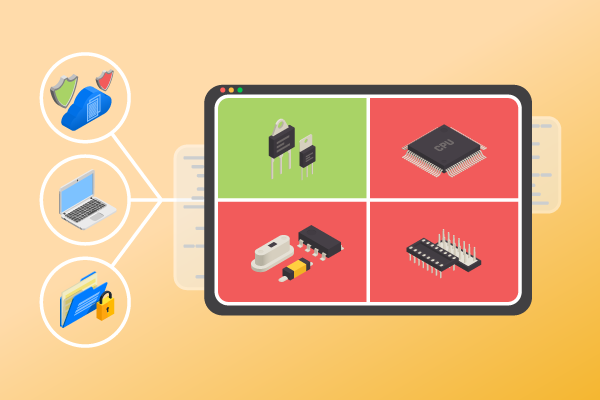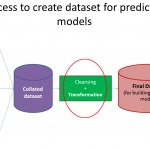
Modern electronics underpin nearly all technical innovation, yet designing competitive, functional products remains highly complex. Teams must optimize metrics spanning performance, power, reliability, cost, manufacturability, and more across interdependent software and hardware subsystems. Electronic design automation (EDA) software provides the backbone for navigating endless engineering tradeoffs efficiently. EDA tools bridge abstraction levels, automate repetitive tasks, and incorporate intelligence to speed development workflows. This article will explore the capabilities propelling EDA’s growth along with emerging trends.
Evolving with IC Design Complexity
Since the advent of large-scale integrated circuits, EDA software has paralleled industry advancements. Today’s EDA market, projected to reach $19 billion by 2028, offers a sophisticated toolchain enabling rapid design closure. Multibillion-transistor processors and systems-on-chips rely on trusted EDA solutions for implementation.
Synopsys, the EDA market leader, provides critical tools used by virtually all major semiconductor companies. They engineer robust, high-performance ICs more quickly thanks to capabilities like logic synthesis, static timing analysis, formal verification, and more. As CEO Aart de Geus remarks, “Our software helps cope with skyrocketing complexity while minimizing risk.” He stresses that behind Synopsys’ growth is “a relentless drive to develop technology that accelerates innovation.”
Likewise, Cadence Design Systems targets advanced chip and system design with tools supporting specification through signoff. Their integrated flows leverage smart engines to synthesize, verify, optimize, and validate complex designs rapidly. Cadence’s machine learning techniques help customers including Samsung, Qualcomm, and Sony deliver leading-edge products faster while avoiding disastrous respins.
Further design tool advancements will prove critical for pioneering innovations in AI, quantum, biotech, and other emerging fields. EDA software sits squarely within the engineering stack empowering technology breakthroughs that transform society.
Democratizing Design
Another essential aspect of modern EDA is democratizing electronics design beyond just specialists. Product development teams demand more flexibility to evaluate concepts and collaborate effectively. Web-based tools like CircuitHub and Upverter provide easy PCB design access without intensive training. As Upverter CEO Zak Homuth explains, “Cloud-native tools give a broader group of inventors and entrepreneurs the power to bring designs from concept to fabrication.” Startups leverage such platforms to prototype iterations swiftly.
Even online calculators from Analog Devices and Texas Instruments allow quick calculations for common analog design tasks like filter sizing. Democratized tools and reference designs help engineers of all skill levels maximize productivity. Student users also gain hands-on learning opportunities. According to Homuth, easy-to-use EDA “makes the next generation of innovators more capable and diverse.” Market leaders like Altium and Cadence now offer entry-level versions of flagship PCB design suites as well. Simplified interfaces distill complex capabilities into guided workflows targeting wider audiences.
EDA solutions also facilitate large enterprises scaling specialized skills horizontally. Automotive OEMs rely on centralized design teams to develop approved modules and reference architectures. Tailored tools then enable engineers across global factories to configure proven platforms rapidly for specific vehicle models and geographies. Democratization in EDA means unlocking access to sophisticated capabilities for diverse stakeholders.
Knowledge and Intelligence Extensions
As engineering problems grow more multifaceted, EDA vendors are partnering closely with customers to capture domain expertise. Developing custom flows or enhancing tools requires deep understanding of processes, data models, and bottlenecks. Anthropic, an AI safety startup, collaborates extensively to optimize EDA tools for their sparse deep learning architectures. “Working with Synopsys, we’ve created novel capabilities like multi- dimensional scaling analysis to accelerate our specific design techniques,” says Electrical Engineering Lead Bahar Aminian. Such co-development pipelines inject niche knowledge into automated toolchains.
Domain expertise also underpins Ansys’ steady acquisition of software providers spanning multiphysics simulation, modeling, data analytics, and more. Vice President Shane Emswiler explains that Ansys “targets best-in-class technologies with proven value for users.” Careful integration preserves their capabilities while bringing complementary solutions under one platform. Customers benefit from tailored tools uniting otherwise disconnected workflows. For example, Ansys mergers have strengthened multidisciplinary optimization across electro-mechanical-thermal domains.
Beyond domain knowledge, artificial intelligence is transforming EDA software itself. ML techniques help tools sift enormous datasets, infer patterns, and optimize outcomes autonomously. Synopsys campaigns like DSO.ai and ASIP Designer integrate intelligence for faster design space exploration. Cadence’s Cerebrus leverages ML for IP characterization and modeling. Across the industry, AI augments the toolchain to boost human productivity.
The Next Horizons
Today’s milestones build foundations for smarter EDA programs that feel intuitive. According to Anthropic’s Bahar Aminian, ideally “engineers spend time on creative problem solving rather than fighting tools.” She envisions AI assistants actively optimizing and tailoring workflows for faster design closure. Interactive visual interfaces could also enable more flexible manipulation of complex constraints. Democratization will further expand as cloud-based tools integrate seamlessly across enterprises.
Yet innovating EDA requires surmounting continuous challenges across technology, integration, and human collaboration. Underlying platforms must evolve to handle exponentially growing data while keeping IP secure. Supporting interconnected toolchains demands high integration and interoperability skills. Ultimately, advancing EDA tools relies on multidisciplinary teams blending domain expertise, software engineering, UI design, and more.
As the global electronics industry grows, EDA innovation will remain imperative to stay competitive. Synopsys’ de Geus concludes, “Economic progress depends on more productive EDA technology.” By automating the routine and augmenting the creative, EDA empowers engineers to consistently achieve the extraordinary. The consequences permeate human progress. Indeed, behind nearly all technical breakthroughs, EDA advances help propel the pace of innovation.















